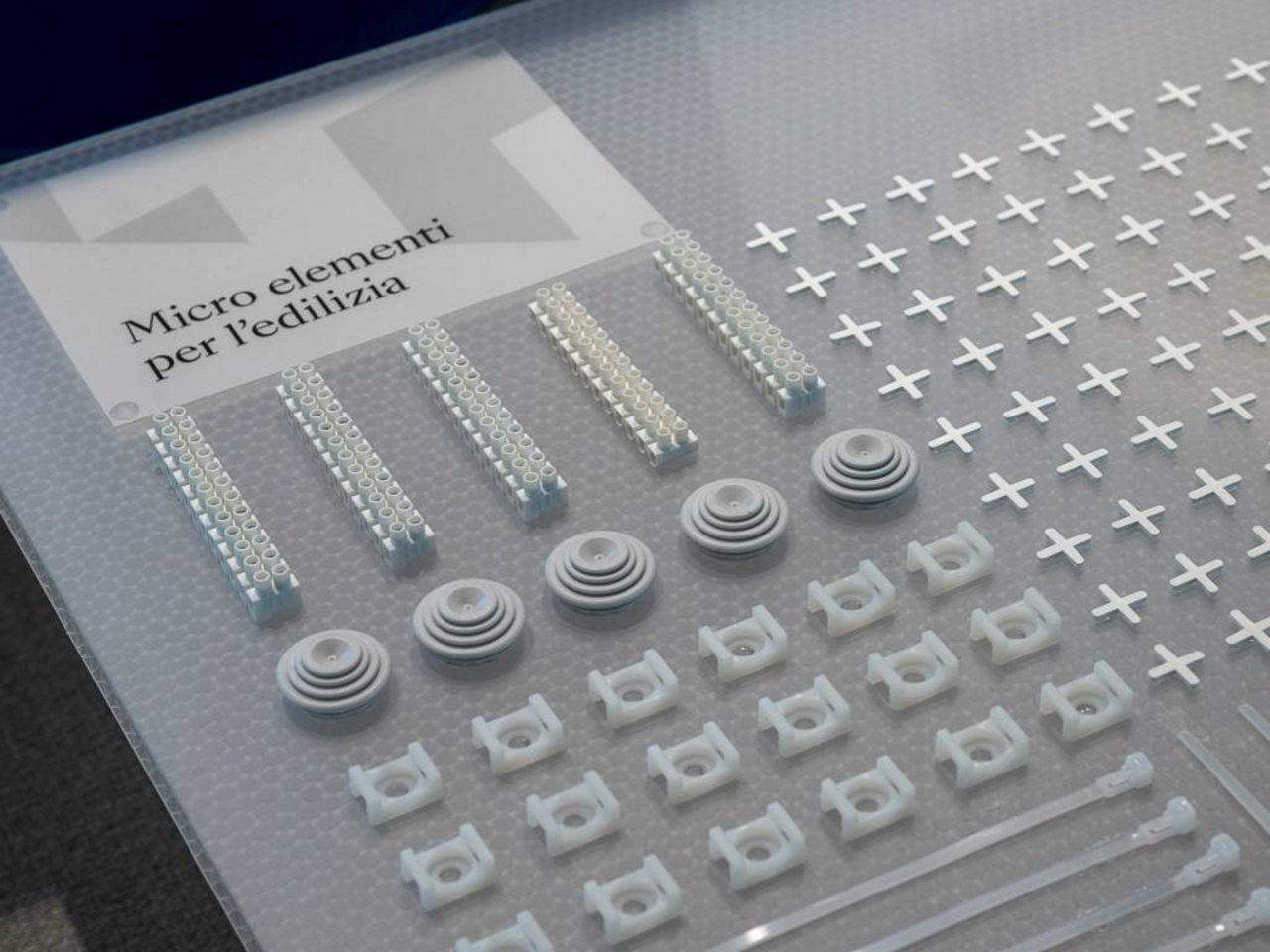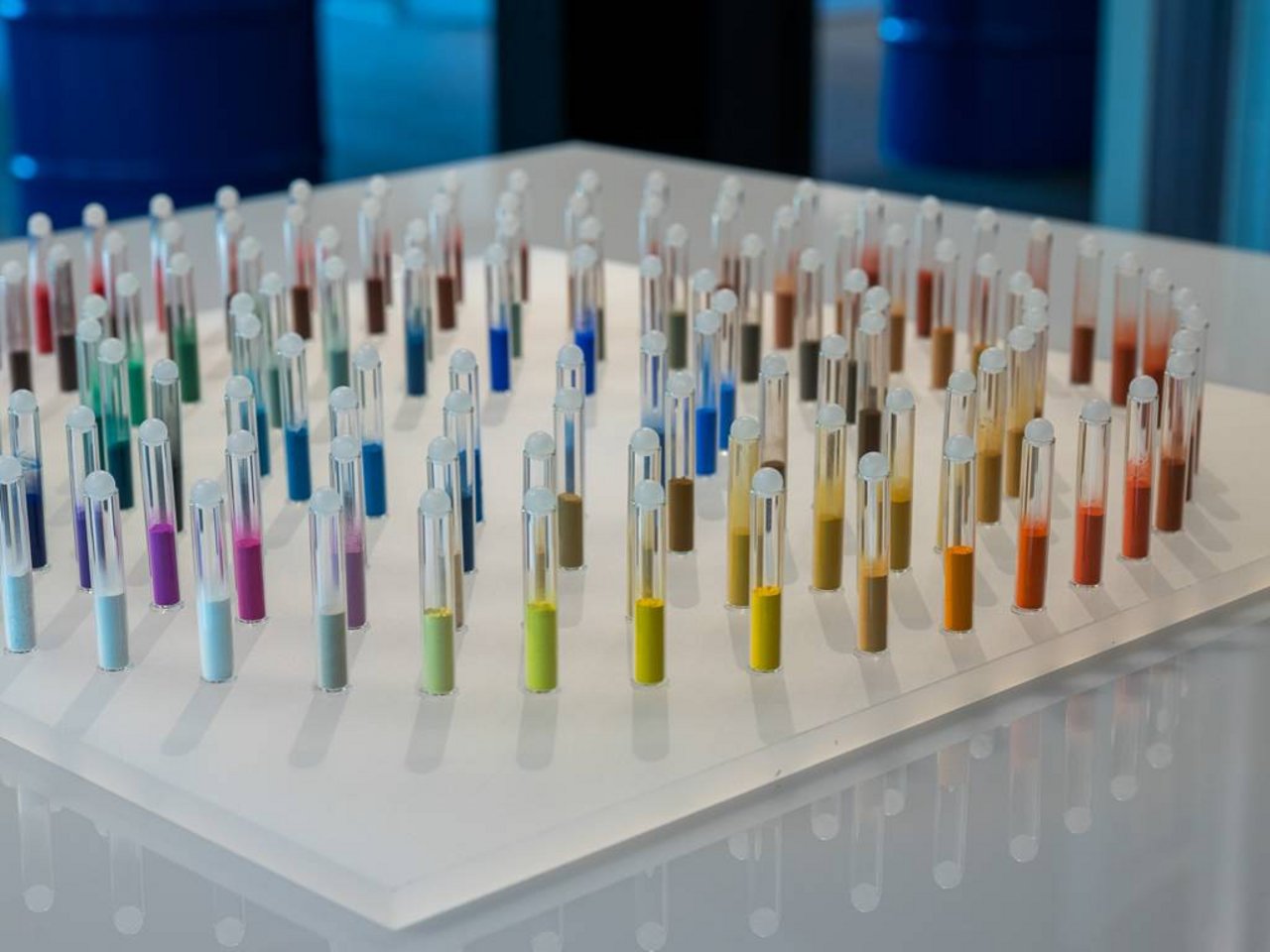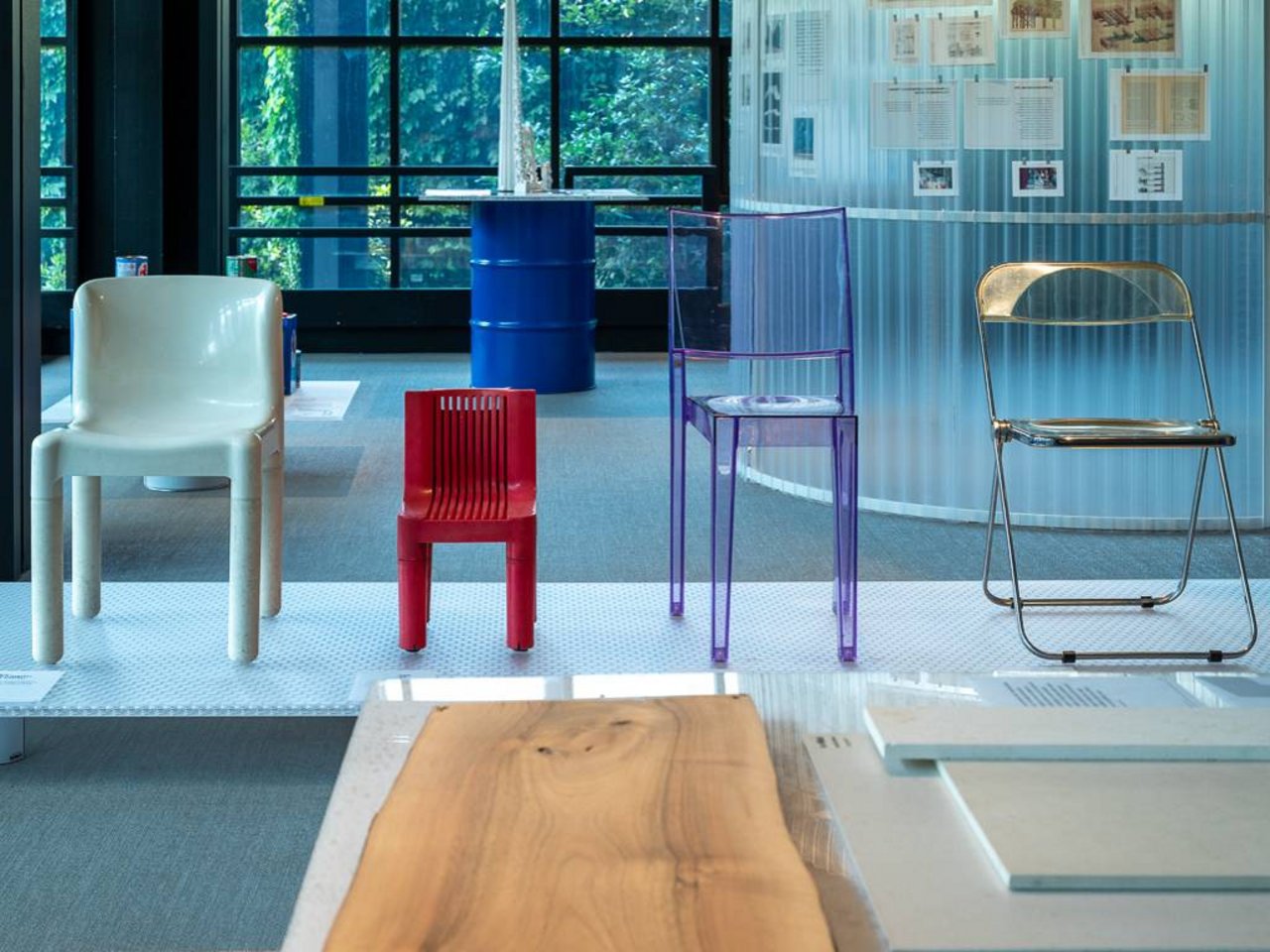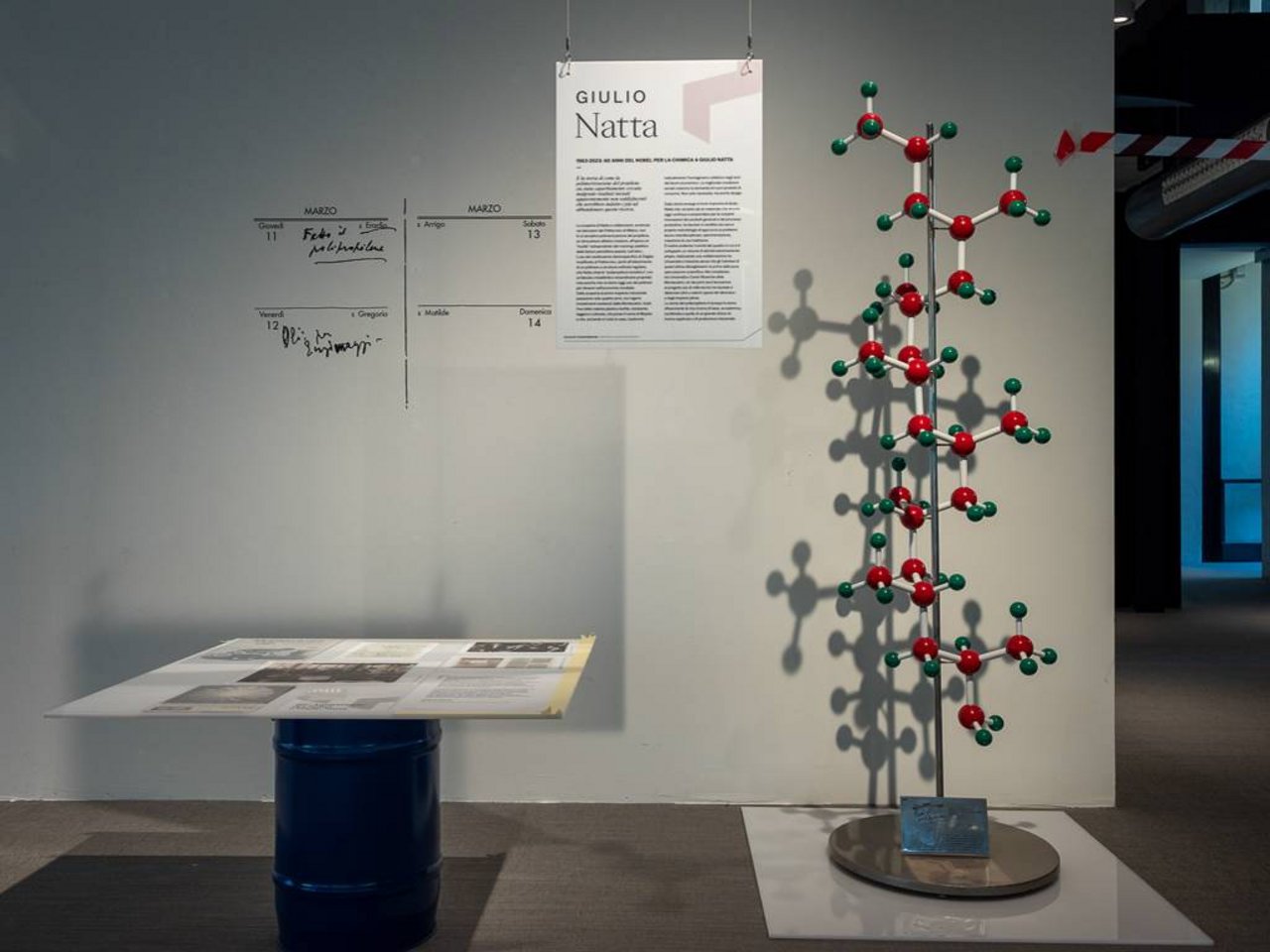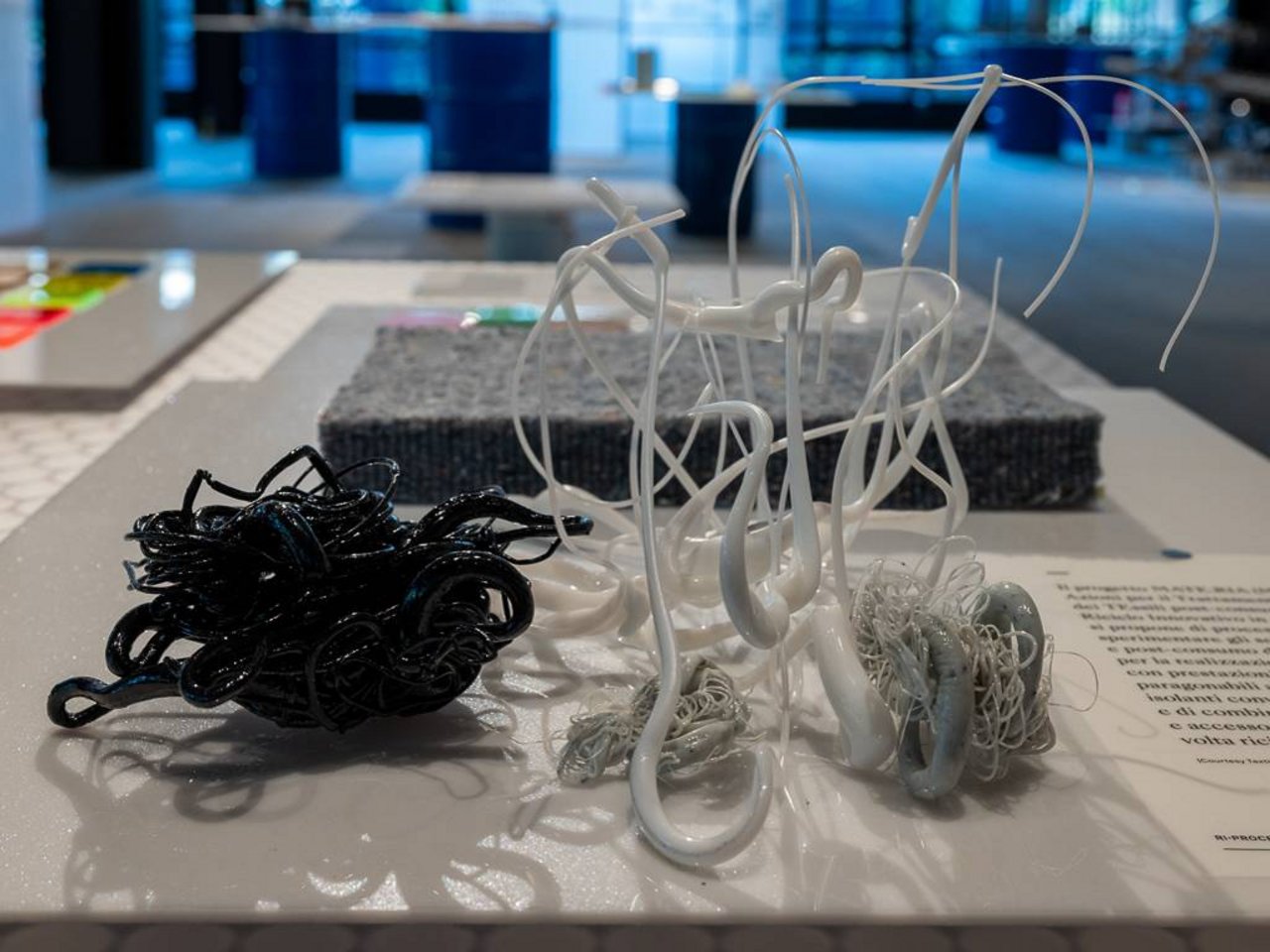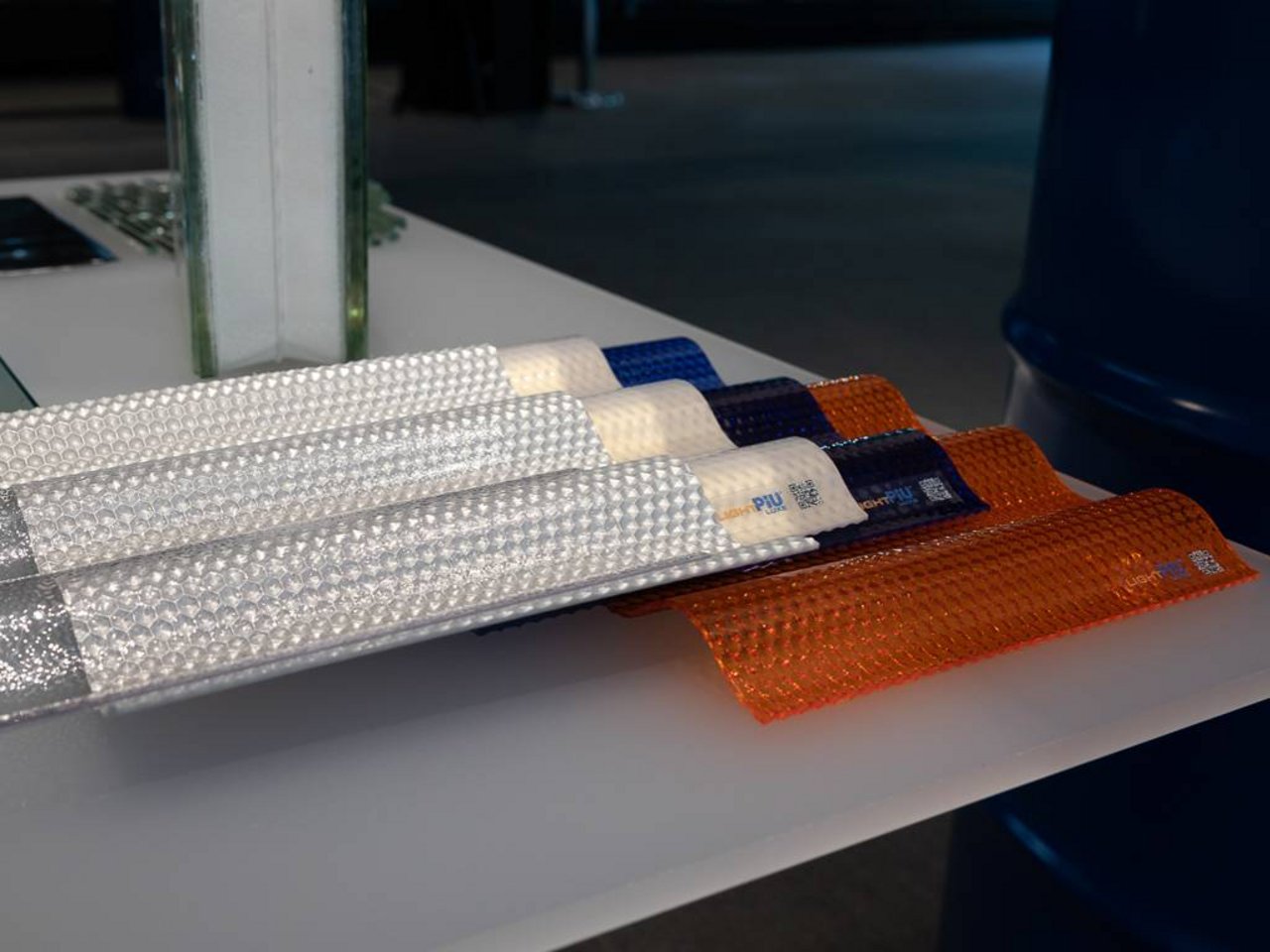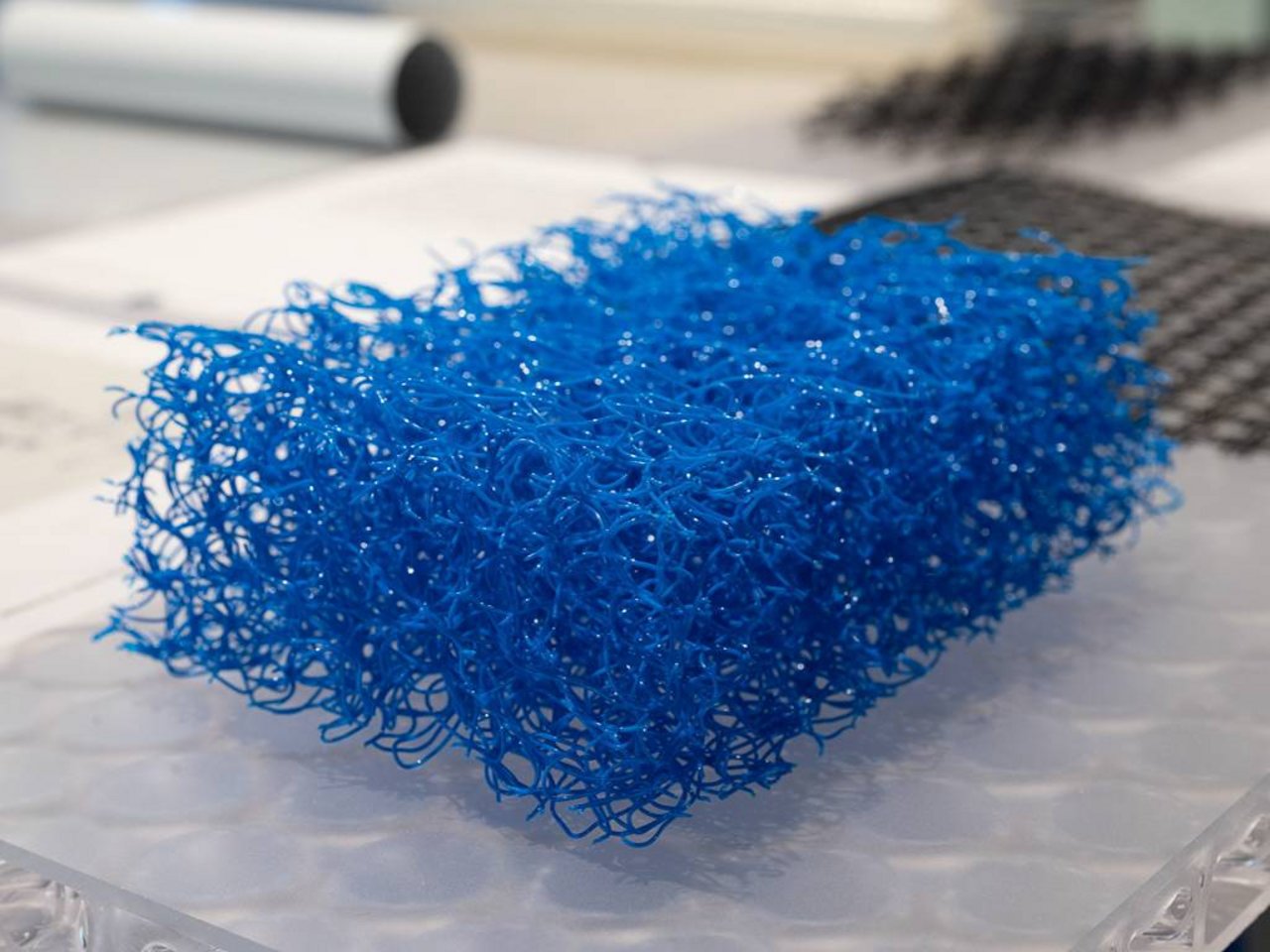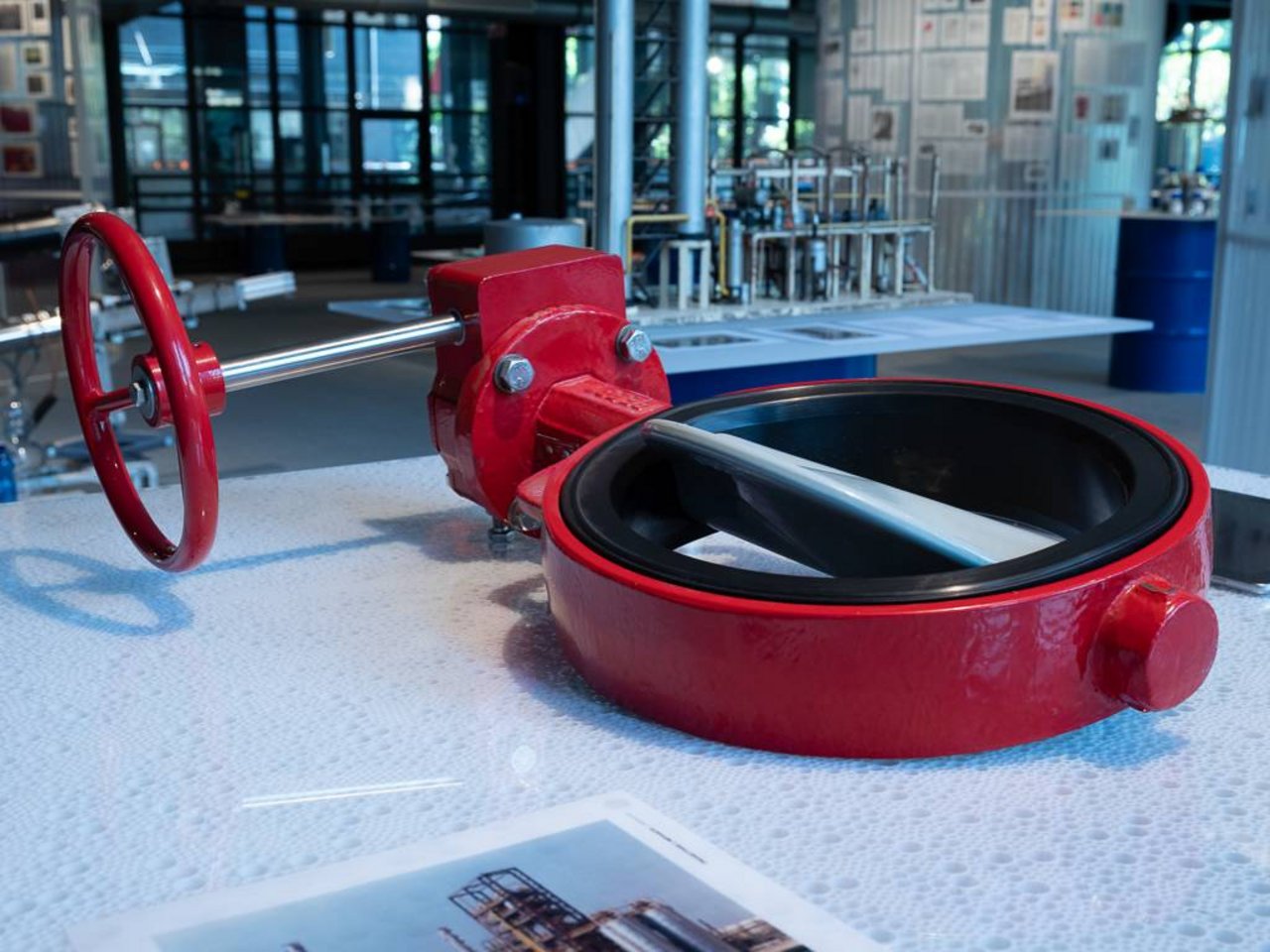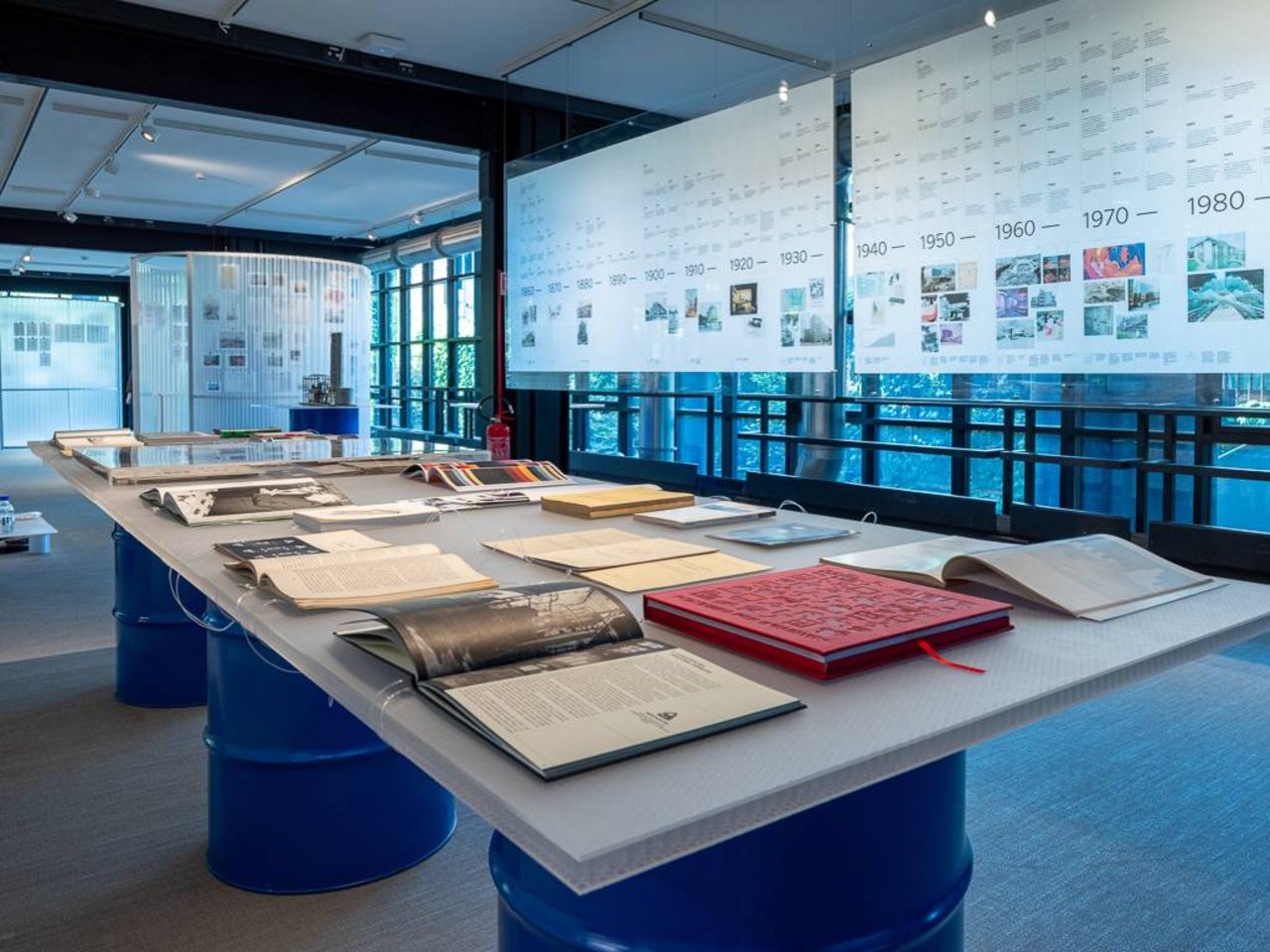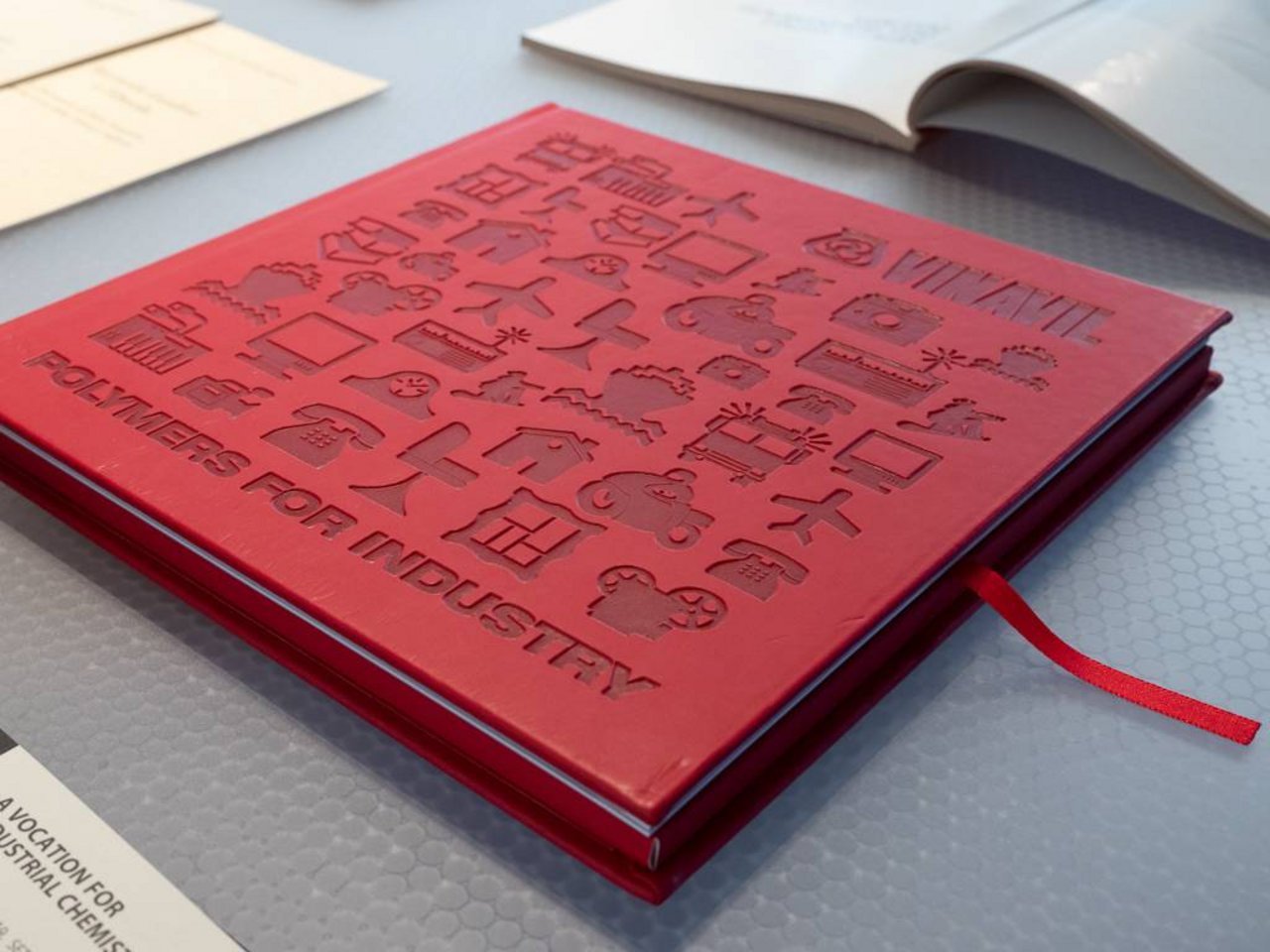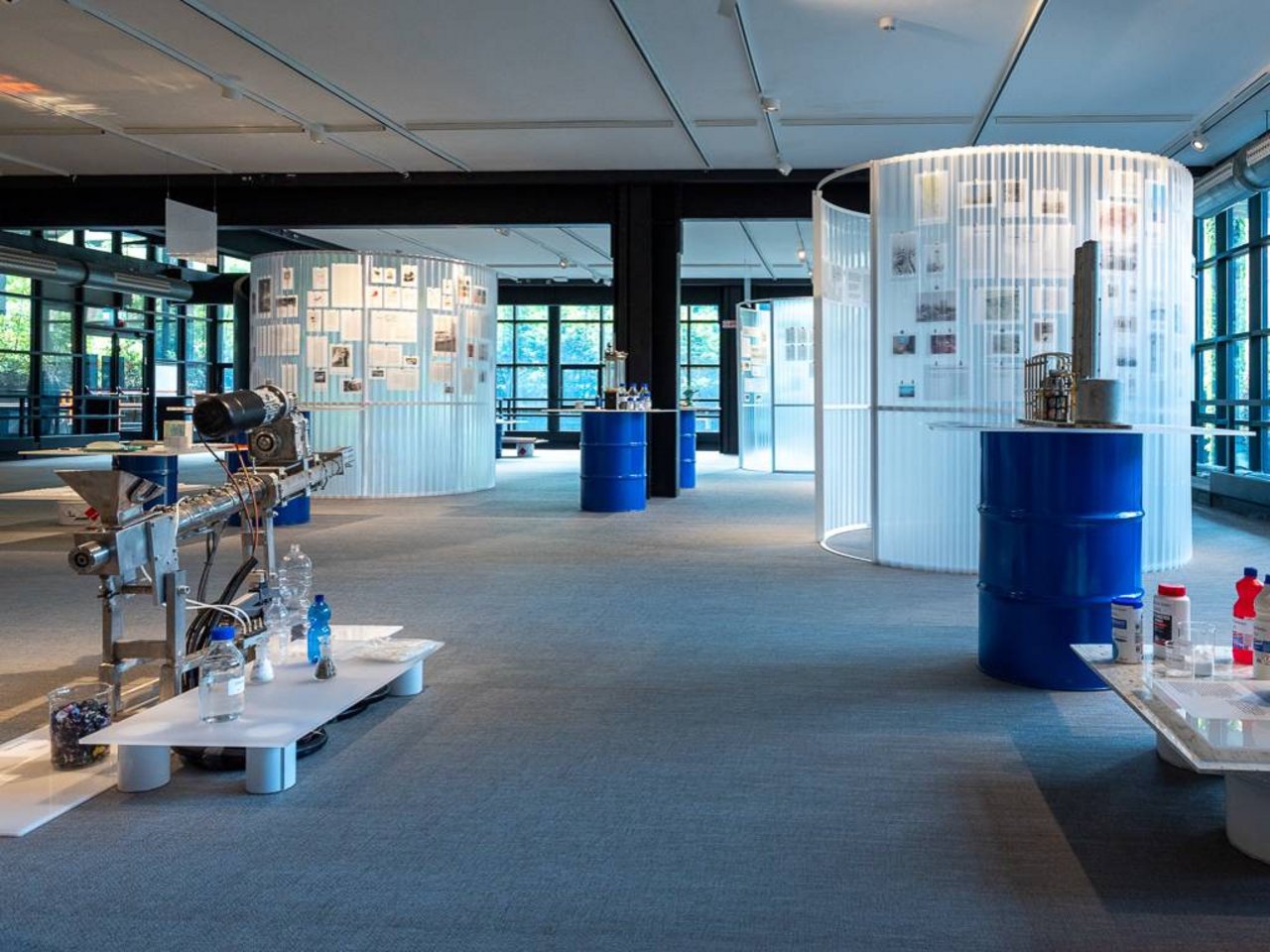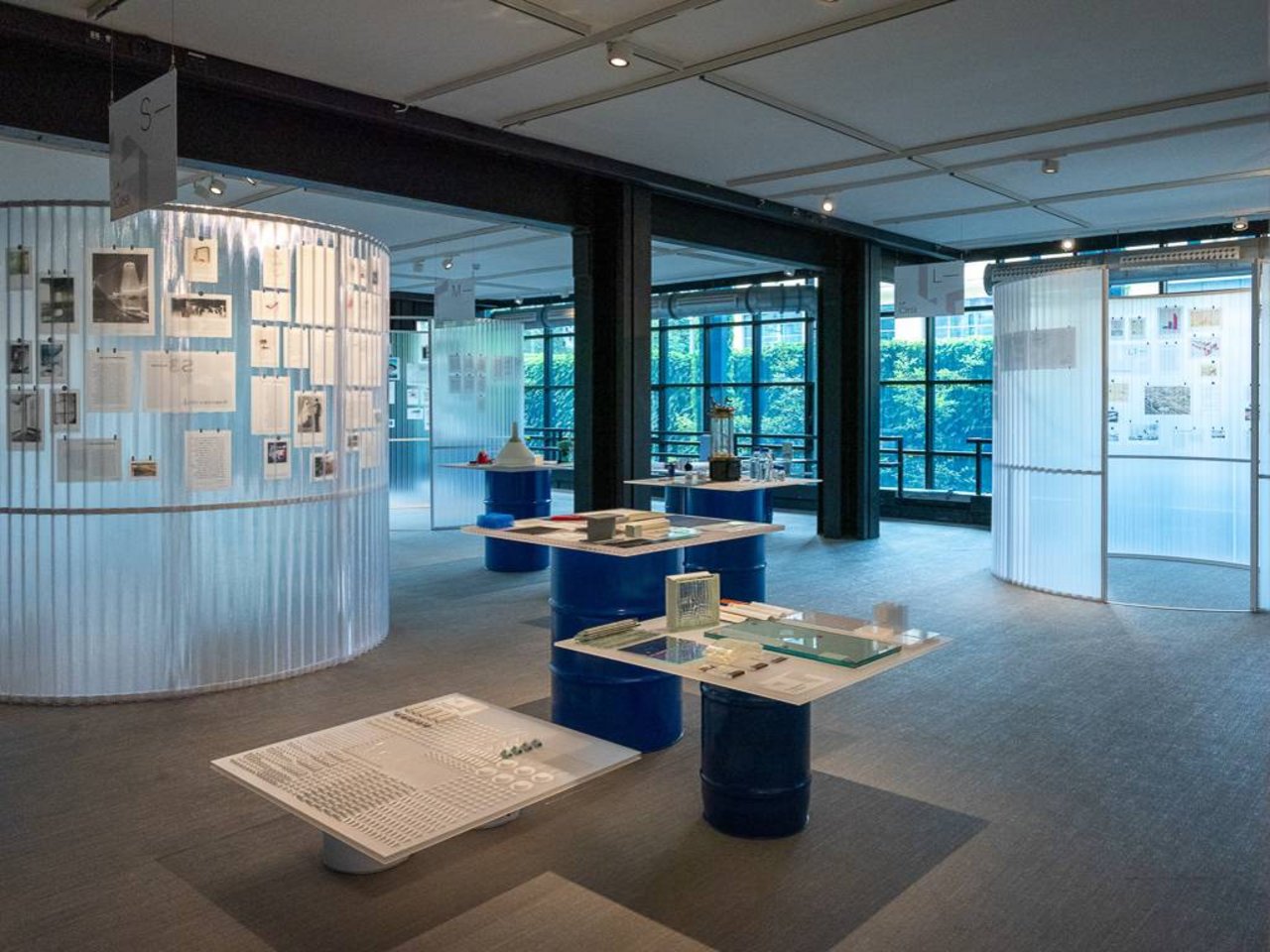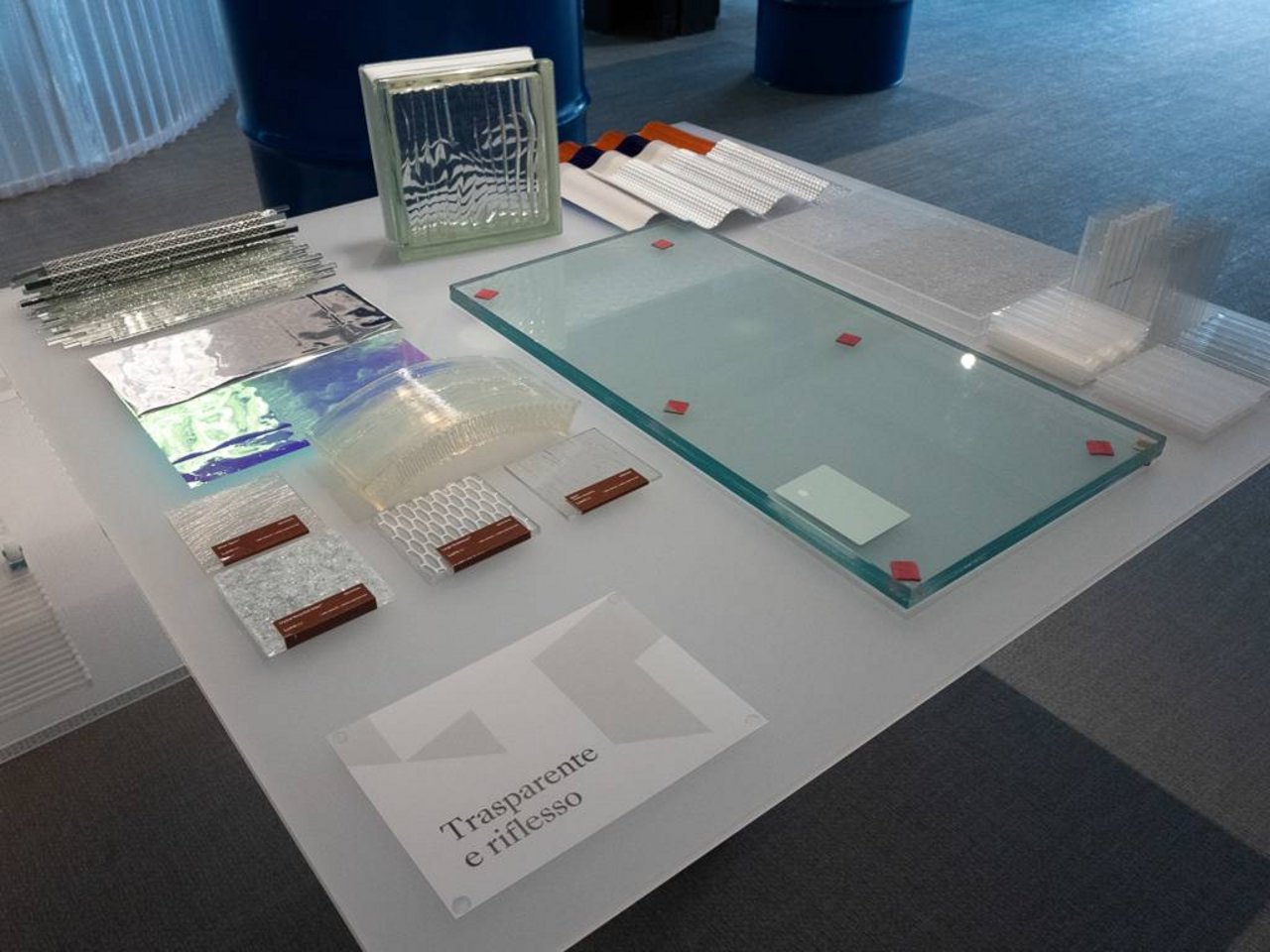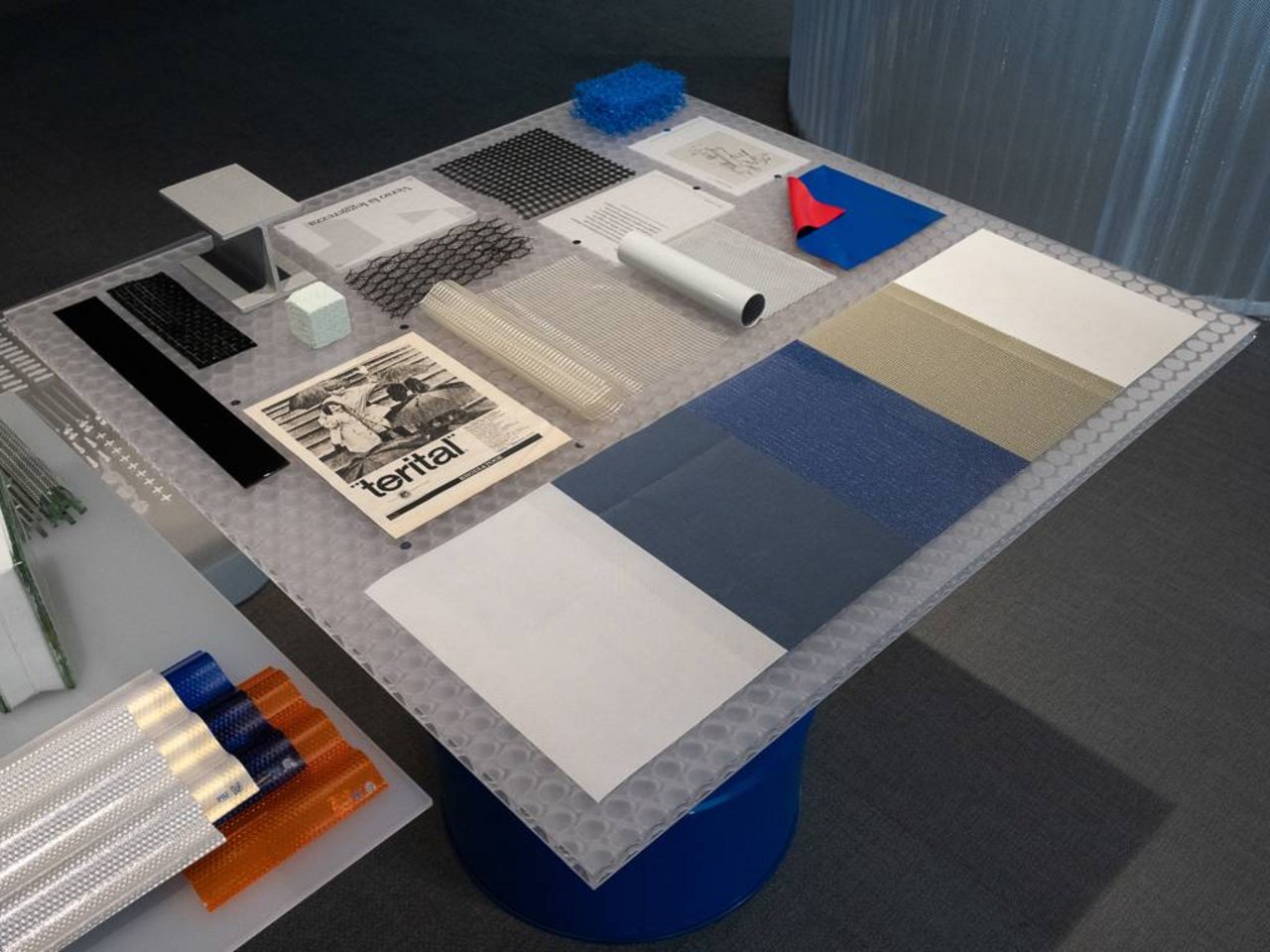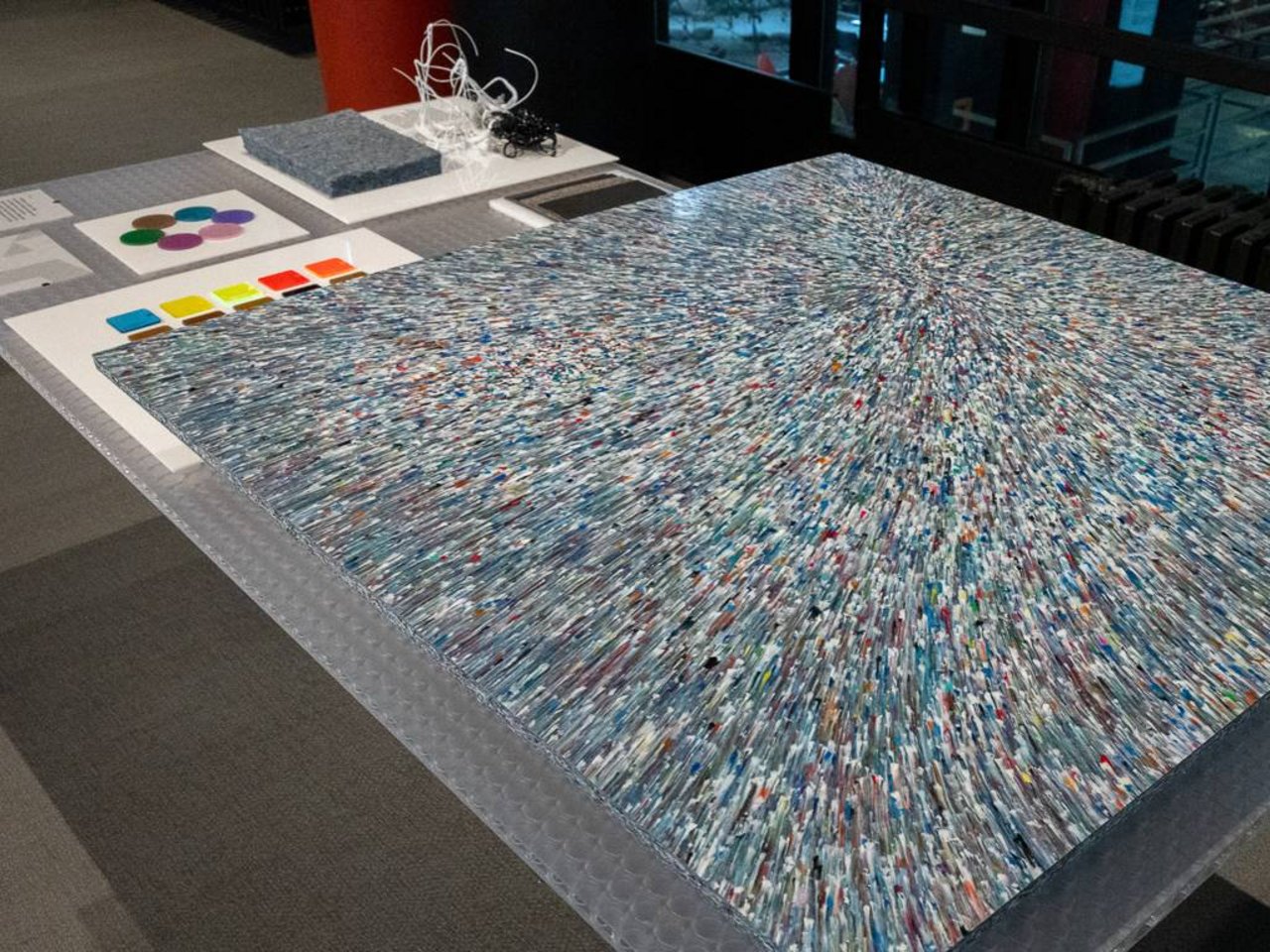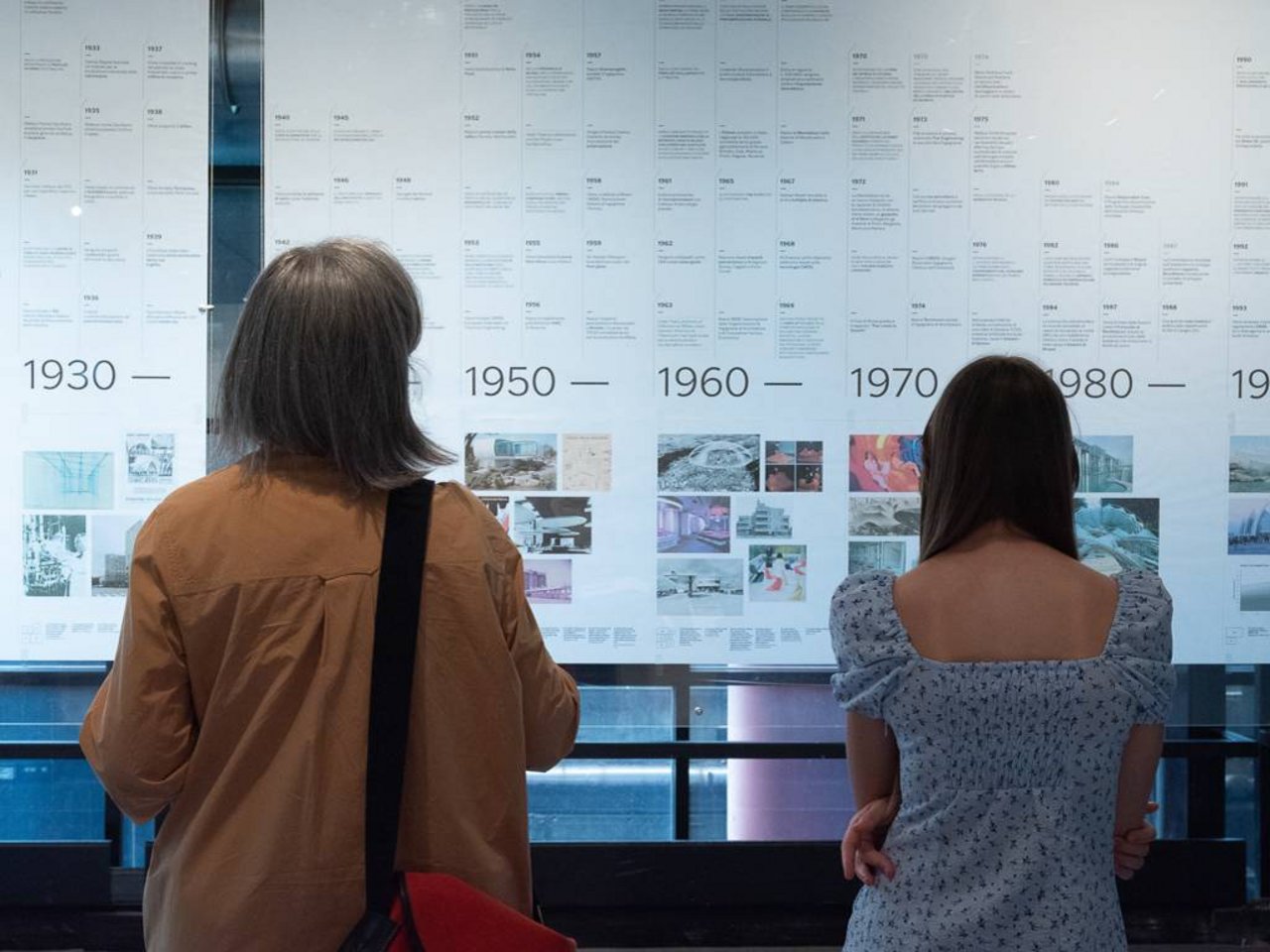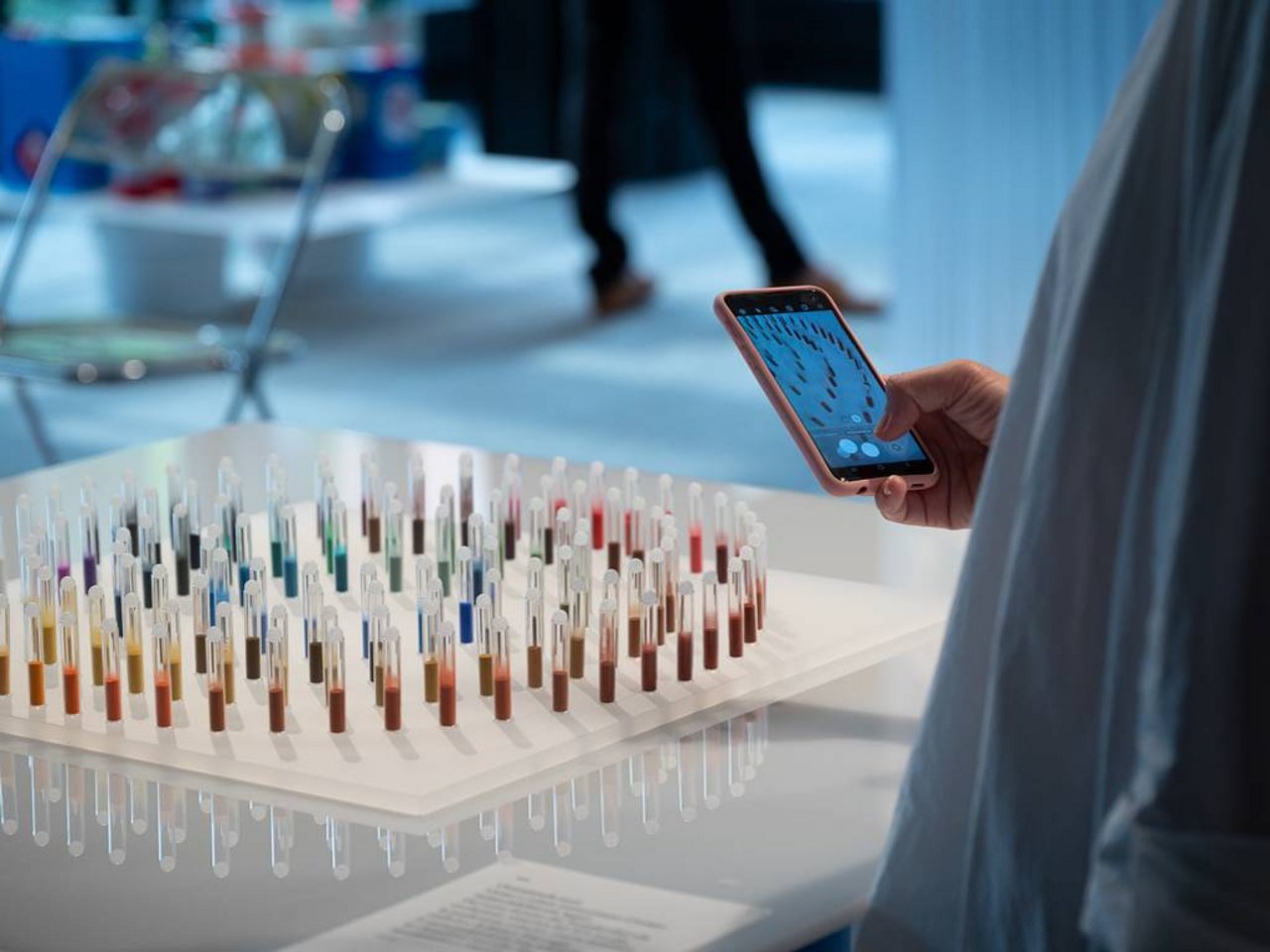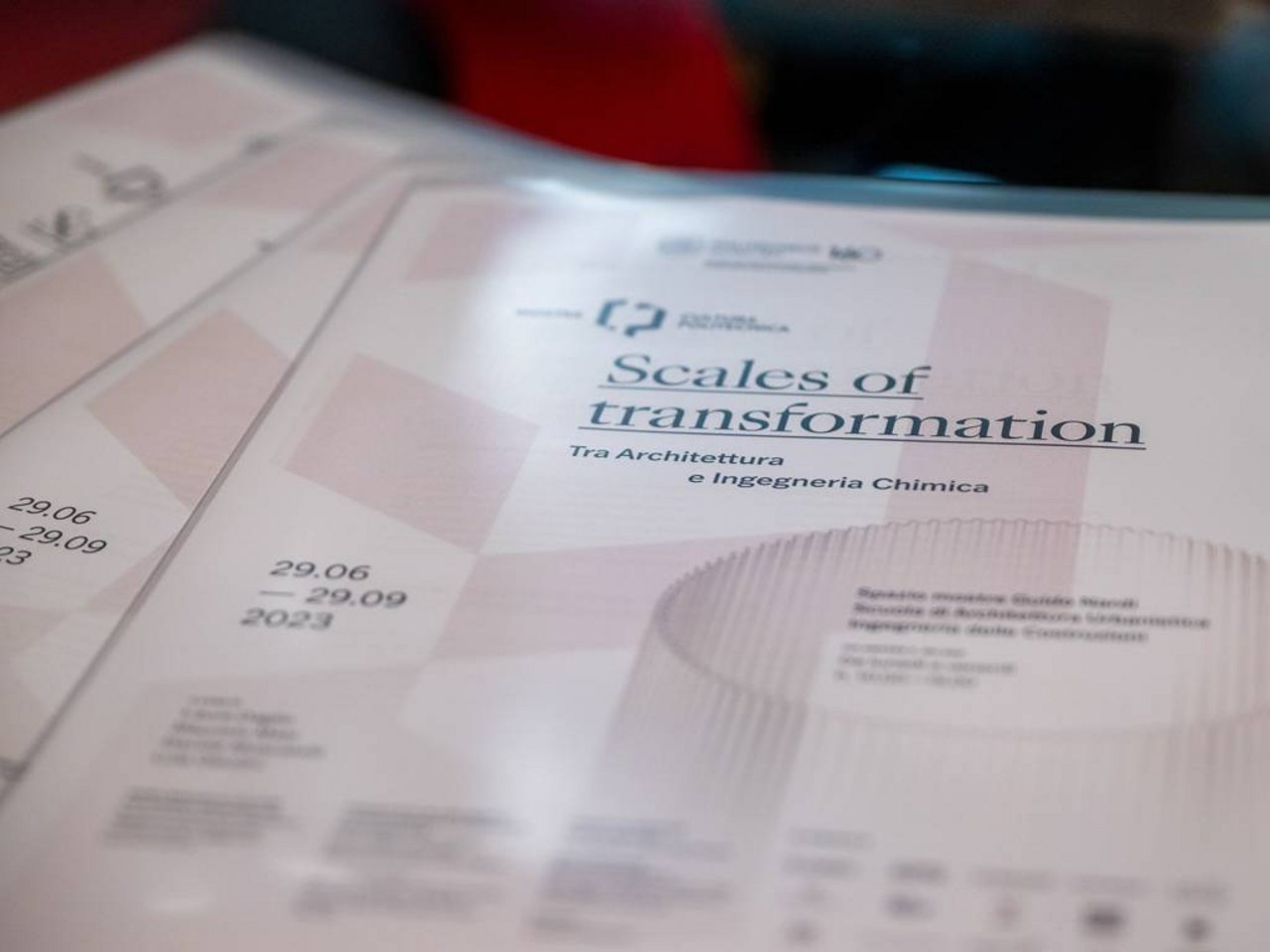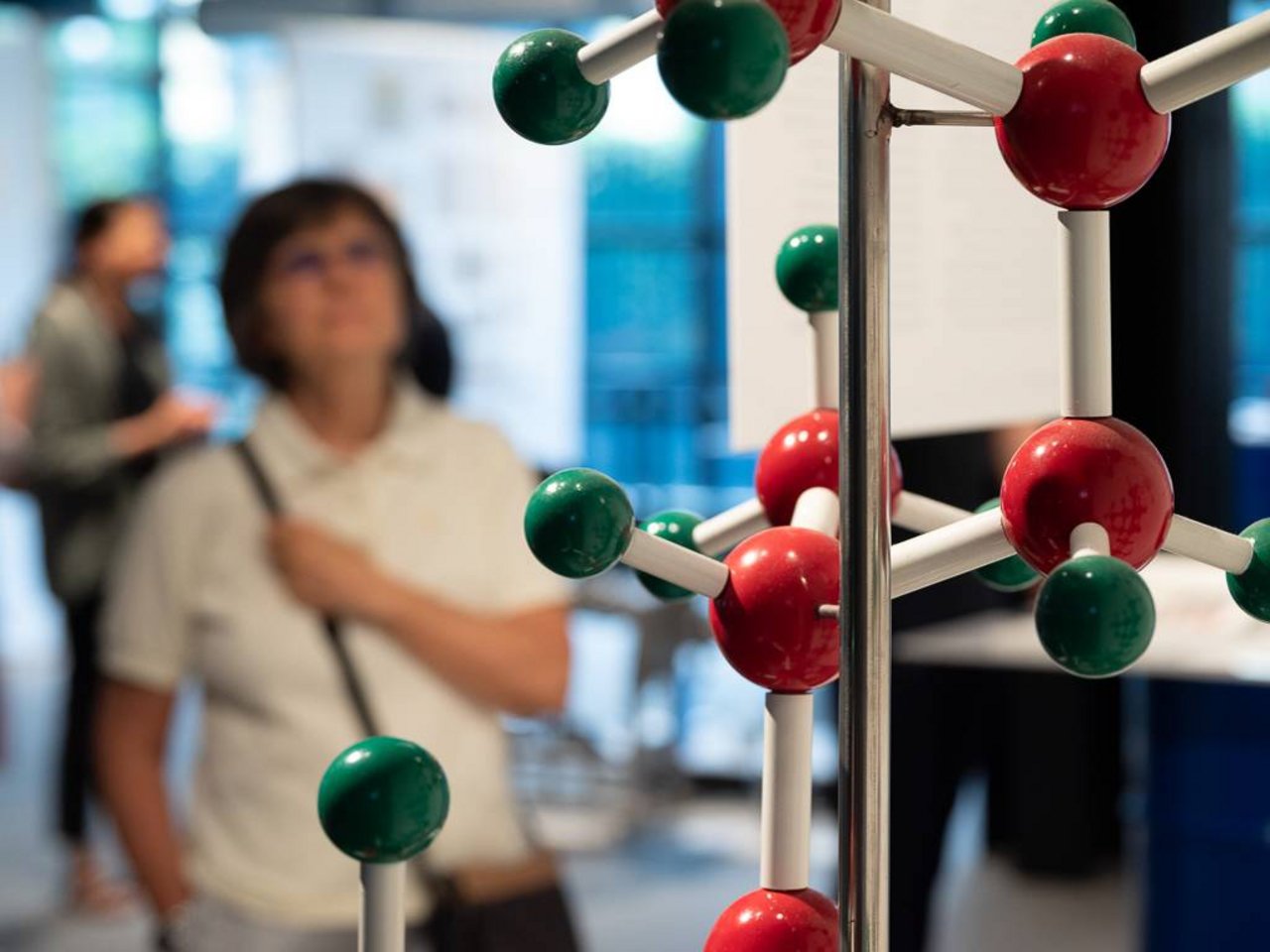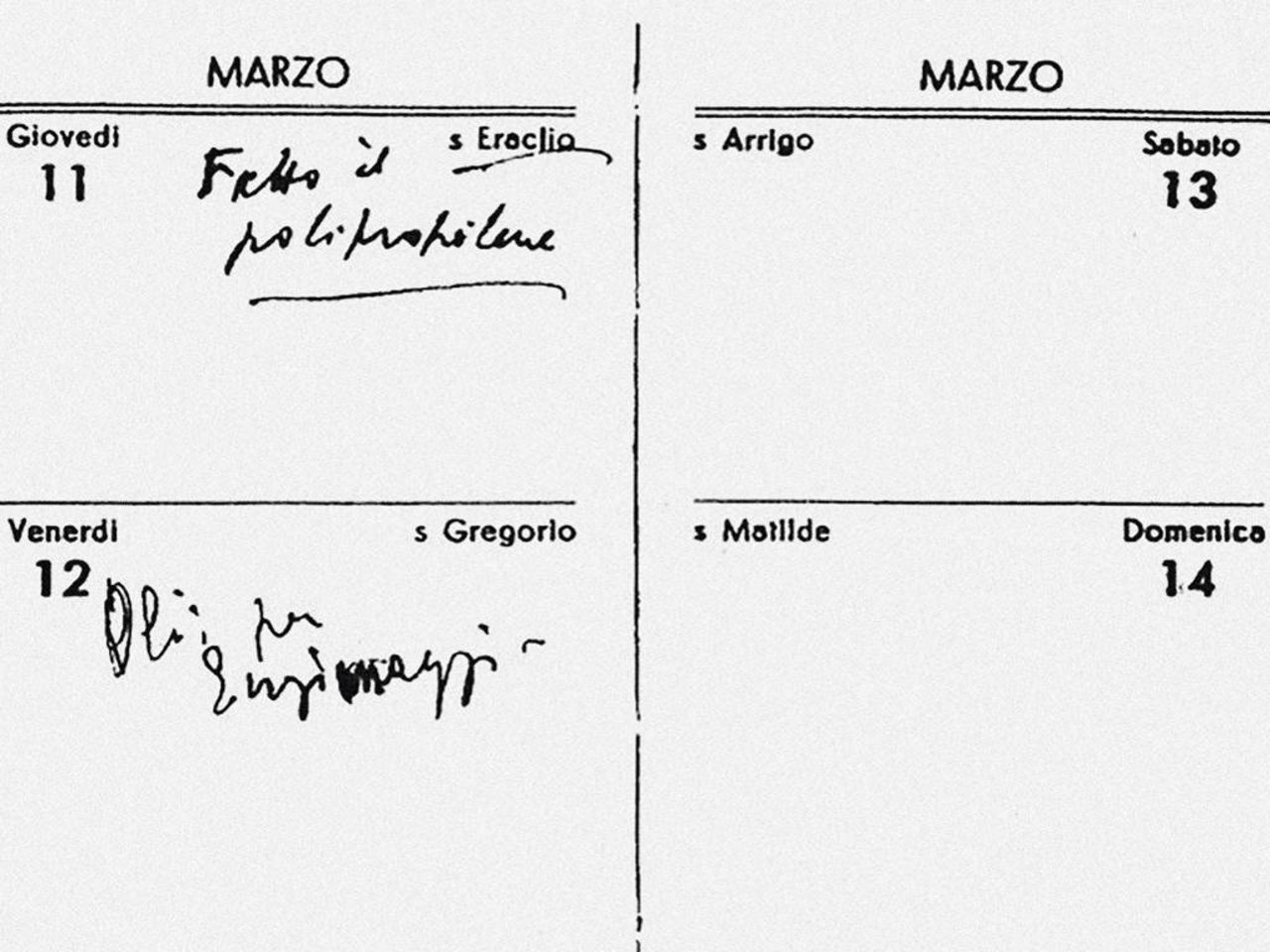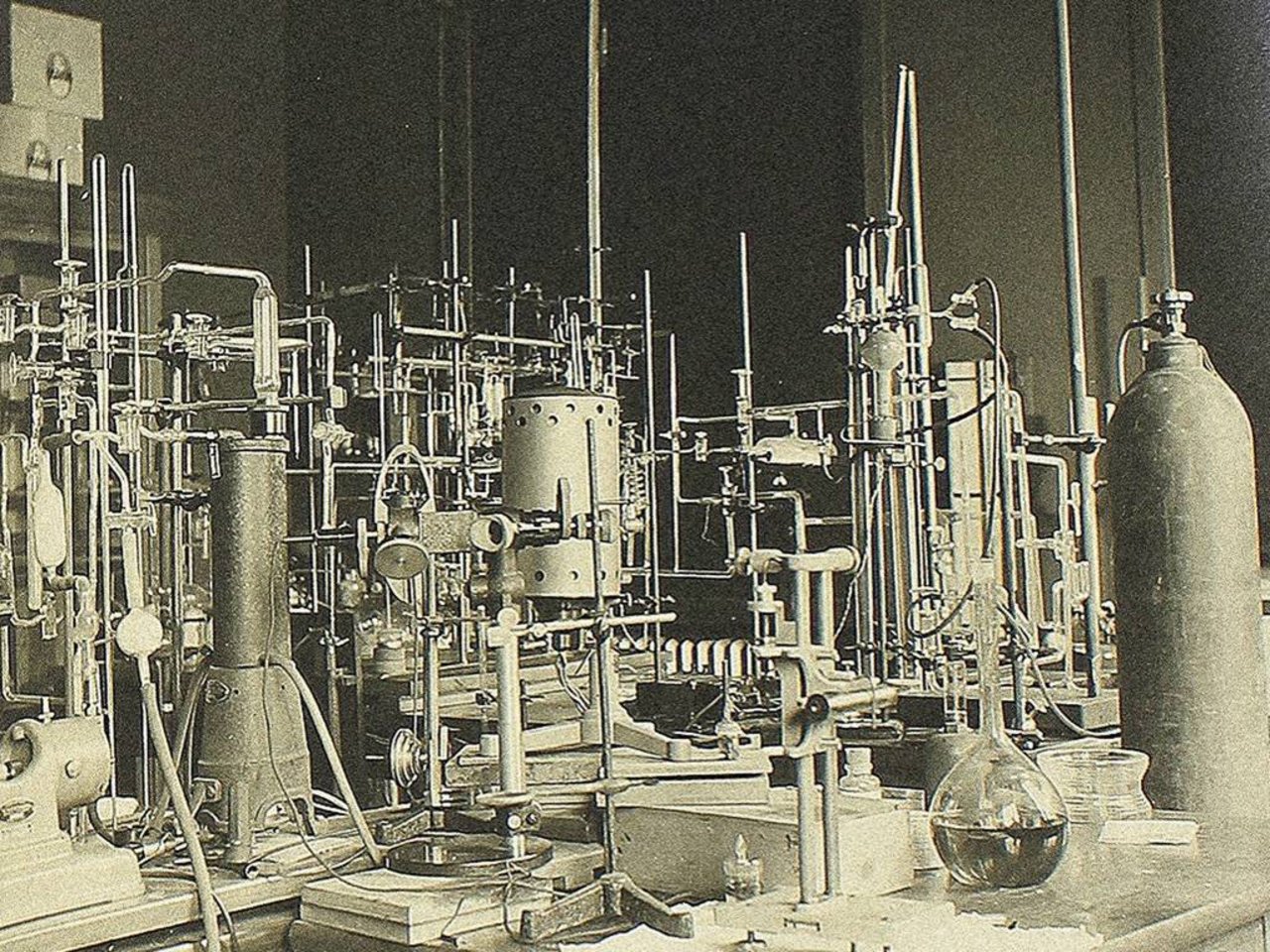Scales of transformation. Between Architecture and Chemical Engineering
30.6 - 13.10.2023
"... firmly clinging to two of his three oxygen companions from before, he went out through the chimney and took to the air. ... He was caught in the wind, knocked to the ground, and lifted ten kilometres. He was breathed in by a hawk, descended into his rushed lungs, but did not penetrate his rich blood, and was expelled. It dissolved three times in the seawater, once in the water of a cascading stream, and again was dismissed. He travelled with the wind for eight years, now high, now low, over the sea and among the clouds, over forests, deserts and boundless expanses of ice. He stumbled into capture and organic adventure. ... Our carbon atom enters the leaf, colliding with countless other (but here useless) nitrogen and oxygen molecules. It adheres to a large, complicated molecule that activates it and simultaneously receives the powerful message from the sky in the dazzling form of a packet of sunlight: in an instant, like an insect caught in a spider's web, it is separated from its oxygen, combined with hydrogen and (it is believed) phosphorus, and finally inserted into a chain, long or short it does not matter, but it is the chain of life." [Il sistema periodico, Primo Levi describes the endless journey of a carbon atom]
Scales of transformation. Between Architecture and Chemical Engineering
FIRST EXHIBITION OF POLYTECHNIC CULTURE
What do architects and chemical engineers have in common?
Man has always modified the world around him to adapt and, with the best of intentions, improve it to his own needs.
In this, the architect and the engineer are those who intervene in the first person, who, if necessary, get their hands dirty, shape and modify what they find, design, build, exercise, make variations and transformations over time.
Architecture and chemical engineering have to do with the transformation of matter at different scales: from interior space to buildings, from the city to the landscape, through a design action that intervenes in nature to try to meet the needs of the community, thanks to industrial processes that make technological innovation available to all, not without consequences for the environment and society.
The exhibition explores these connections, discovering unprecedented affinities, revealing the invisible, overcoming commonplaces, not to give answers, but to ask questions, to offer visitors cues for more profound knowledge, to solicit reflections, to generate awareness and critical consciousness.
It is a tale that develops on several levels of communication and renounces a scientific systematic treatment to unfold through the selection of a few emblematic "stories" represented with images, objects, drawings, simulations and models, both current and archival, which expose, in a chronological perspective, the many and unexpected connections, relating them to the historical, economic, productive, social and cultural context in the 160 years of history of the Politecnico di Milano.
With "Scales of Transformation. Between Architecture and Chemical Engineering", the Politecnico di Milano inaugurates a cycle of exhibitions that recounts and enhances the "polytechnic culture": an approach to science, technology, art that integrates technical culture with the humanities as a form of knowledge, strengthening the project as the only way to intervene on society and the environment with a view to sustainability.
The initiatives weave together several disciplines to highlight this standard matrix and engage visitors on some critical contemporary issues. Aimed at the general public, they pursue the university's mission of opening up to the city, sharing results, and generating knowledge for civil society.
